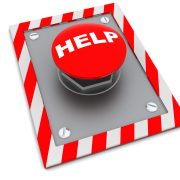Top 5 Best Practices for your Help Desk
A Help Desk is designed to be the first point of contact for customers when they have requests or problems with their technology services. And you, as the technology service provider are responsible for addressing those issues as quickly and efficiently as possible. It is essential, then, to ensure a strategic method of managing this single point of contact for requests and issues. This will include tracking inbound and outbound ticket processes, escalation procedures, and ticket resolution.
Good luck finding clients that are ok with issues slipping through the cracks and hanging out there for extended periods of time. People just won’t stand for it, so to ensure this doesn’t happen, check out our Top 5 Best Practices for your Help Desk.
Everything is a Ticket – All incidents and requests must be a ticket to properly capture all work performed, regardless of length, nature, or severity of the request.
Keep Customers in the Loop – Leverage Closed Loop to communicate with the customers. You should be updating them on progress and the status of their service requests.
All Roads Lead to Rome – Rome being your service boards, everything ends up as a service ticket on your service boards regardless of the source. The service board is what then controls your next step through workflows.
My Life is My Service Board – Help Desk employees work service tickets on their assigned service boards in order of assignment and the service level agreement’s priority, urgency, and impact.
All Time, All of the Time, On Time – All employees must enter all time worked, on everything they work (all of the time), as it happens (on time).


